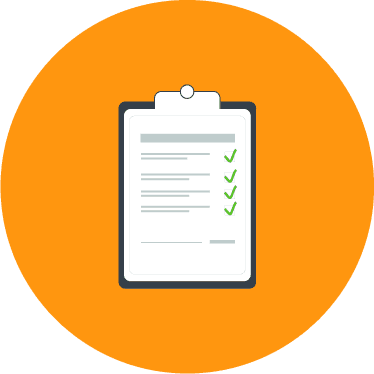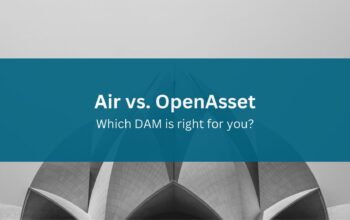In the 1980s, the proliferation of computing and server technology enabled companies to manage simple documents electronically. As the 80s turned into the 90s, media companies with large libraries of visual content started to look for advanced solutions to manage their needs (which were demanding for the time).
Over the following 20 years, this developed into Digital Asset Management as we know it today.
What is Digital Asset Management (DAM)?
If you’re not familiar with the concept, Digital Asset Management is a way of managing your organization’s digital assets efficiently and in one place. However, it is more than just a means of storage. A good DAM system makes content accessible; digital assets that are searchable and can be utilized in ways that management on native operating systems does not allow.
All modern DAM systems are cloud-based; this means they are available to any authorized company user from any device. No large software downloads. No inconvenient updates. No need to be on the company network. And it’s all completely secure too.
Why should I use a DAM?
Digital Asset Management software allows you to organize, share and centralize all of your company’s digital assets. Everything for Marketing, Operations and Sales success is at the fingertips of everyone who needs it.
DAM also puts you in control of a digital asset’s lifecycle in a way not possible without one. All assets need to be managed, distributed, and then preserved or archived. Employees working in companies with large collections of media assets need easy access to suitable assets; DAM gives assurance that users only have access to approved content. When that content is out of date, you can instantly remove its availability. You no longer need to ask colleagues to delete old files from network drives. You are now in full control of your company brand.
Some of the benefits of a DAM include:
 | Assets are easy to find and available immediately meaning significant time savings for teams across your business. DAM allows employees to focus on their core job, not admin. |
 | Assurance that your brand’s integrity is maintained and delivered consistently. |
 | A DAM is scalable with your business; as the number of assets increases, the workload in managing them does not. |
 | Editing, sharing and repurposing assets is greatly simplified. |
 | Facilitated data analysis – tools that allow your organization to forecast revenue, carry out market research and data analysis. |
You can find out more in our blog ‘The Pros and Cons of Digital Asset Management’.
Is a DAM system complicated to set up?
As with any system you introduce into your business, it is vital that the DAM is implemented and adopted correctly to benefit from the power it will bring to your organization. Managed correctly, implementing a DAM should be a painless experience. Planning the rollout of your new DAM, and preparing the content it will hold, is essential for success; it makes certain that you deliver a functioning tool that will serve users well for years to come. The implementation plan should address:
- What your goals are for the new DAM.
- The team that will be responsible for implementation and who will ‘own’ the DAM after implementation.
- Preparing content for upload – agreeing goals for the migration or upload of content, creating a keyword taxonomy, deciding on custom fields, etc.
- User groups – who will be using the DAM, what their requirements are and the permissions they need.
- What integrations need to be considered – project database, intranet, CMS or other applications via an API.
- How and when you will roll out the DAM to users.
At OpenAsset we have a full onboarding process, detailed online guides and a team to support you through the set up of your new DAM system.
What can I store on the DAM?
Almost any file that company users might need access to can be made available on your DAM. For example:
- Photos
- Videos
- Design files
- Word documents
- PDFs
- Company brand items
- Presentations
- Marketing content and collateral
Who should have access to the DAM?
While in theory, anyone in your organization can have access to a DAM system, there are groups of common users in most companies. Each user group has their own needs; these needs should be identified in the implementation phase to make certain everyone gets value from the new system.
Common user groups include:
 | Marketing teams Most commonly, Marketing is the owner of the system. DAM allows efficient cataloging of marketing materials and allows for tighter control over the company brand. |
 | Graphic Designers Integrating DAM into a Graphic Designer’s workflow means more efficient creation of bid documents and proposals. |
 | Architects, Engineers & Team Leads These users don’t have time to spend hours searching for images from previous projects, they need them available for proposals now and at the right spec for the template they’re working with. DAM makes this possible. |
 | Business Development and Sales Teams Sales teams often think on their feet when trying to close a potential client. With this in mind, giving sales teams instant access to every piece of company marketing collateral turns “I’ll forward that to you this afternoon” into “I’ll forward that to you now”. |
 | Partners As a leader in the organization, Partners have very little room in their schedule for creating the presentation they need for their next meeting. A DAM system means it’s as easy as drag and drop into a template. |
You can find out more about user groups, and their needs, in our blog ‘Who will use DAM in your business’.
Selling a DAM system to the boss
If you’re reading this, there’s a good chance that you know you have a problem with managing your company’s assets. Conversely, management might not be aware of the additional work that it’s causing the company teams; it’s the case you’ve done such a good job against the odds that, like a duck serenely floating along, they don’t see the furious paddling that’s happening underneath.
As with every investment in a new system or digital service, there needs to be a clear business case for the purchase. Next to highlighting the obvious benefits of more efficient working, a common metric used to sell the concept of a DAM to those managing the purse strings is Return On Investment (or ROI).
However, it can be a daunting task to work out all the variables that give you a clear ROI for budgetary conversations. An ROI calculator enables you to look at the variables, understand the process, and clearly see how you’ve reached the end figure.
At OpenAsset, we’ve created some resources to help you understand and measure ROI:
- The OpenAsset ROI calculator gives you an ROI range and estimated time savings. This is a great place to start if you’re new to DAM.
- Our Guide to Understanding DAM ROI breaks down the metrics you need to consider to get an ROI value for your firm. If you’re looking to really get to grips with your ROI this is the guide for you.



